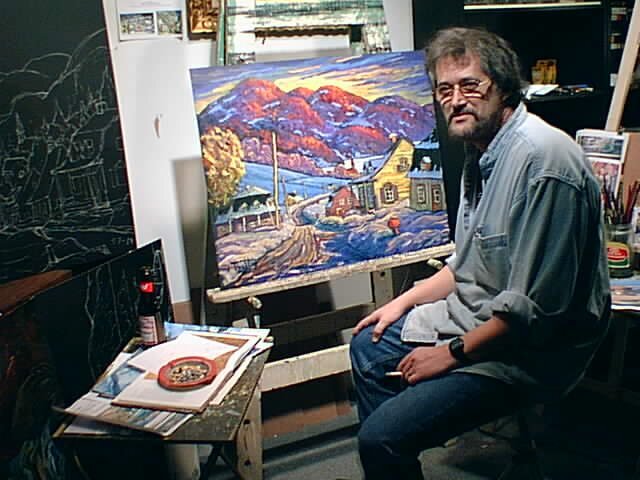
Artist’s Biography
Who is Jacques Tremblay?
A shy and timid man who paints with absolute passion, what he loves the most – the beauty and essence of the Québec and Acadian landscape and culture.
A self-taught artist, Jacques Tremblay’s upbringing stems from the same sleepy towns depicted in in his paintings. He was inspired by the village churches, the red rooftops, the stone homes, and the wooden shacks, all of which were part of the picturesque mosaic of the Québec landscape.
Today, these same towns are somewhat modernized and commercialized but fortunately Tremblay has made it his life’s work to paint the Québec and Acadian village as it once was – full of colour and undisturbed rustic charm. The subjects of his paintings are a blend of what is there today, with things that existed when he was growing up.
The main artistic influences for Tremblay’s earlier work came from Cezanne’s art. Here the artist learned about concept, design, and colour. Van Gogh’s art became a big influence throughout his middle period when the artist perfected his brushstroke and colour. But it was not until Tremblay stumbled upon the works of the only Québec master he knew about, Marc Aurèle Fortin that his art became “whole”. A conglomerate of these influences coupled with the artist’s intense passion to portray scenes from his past are all the ingredients that lead to the delicate creation of a Tremblay painting.
In his last and most intense period the artist has been painting on a black background, which he has established as his emblematic and unique style – hence the name of his first gallery “Galerie La Manière Noire”. He has also become recognized as The Painter of Montréal’s Famous and Legendary Landmarks which often include nostalgic hockey scenes within the traditional Montréal and Québec architecture.
Jacques Tremblay continues to paint today with the most passion and intensity that he has ever had throughout his lengthy Artistic career … he is also, I believe, in the most creative period of his life.
Ferdinando Onorato
Art Director
